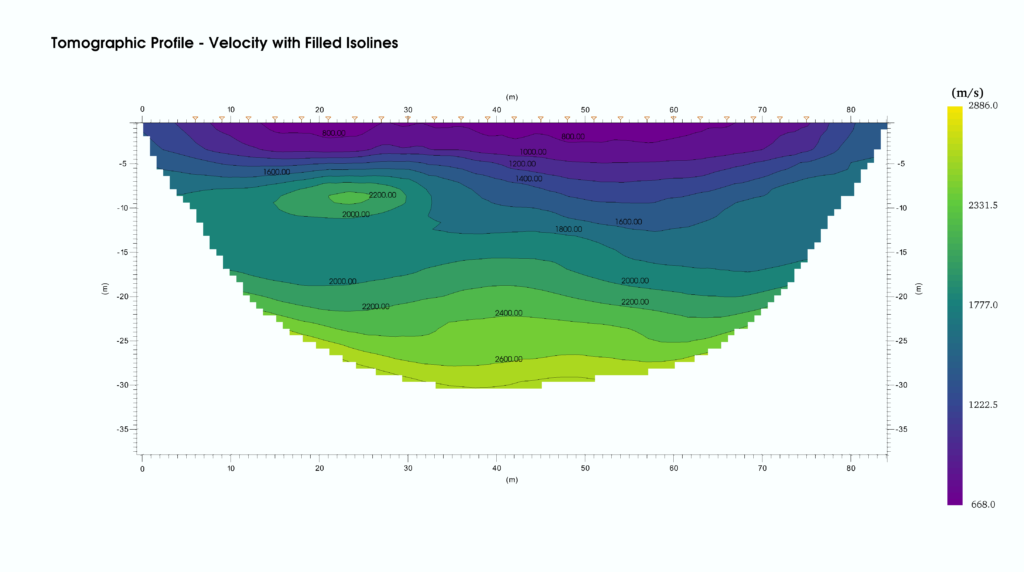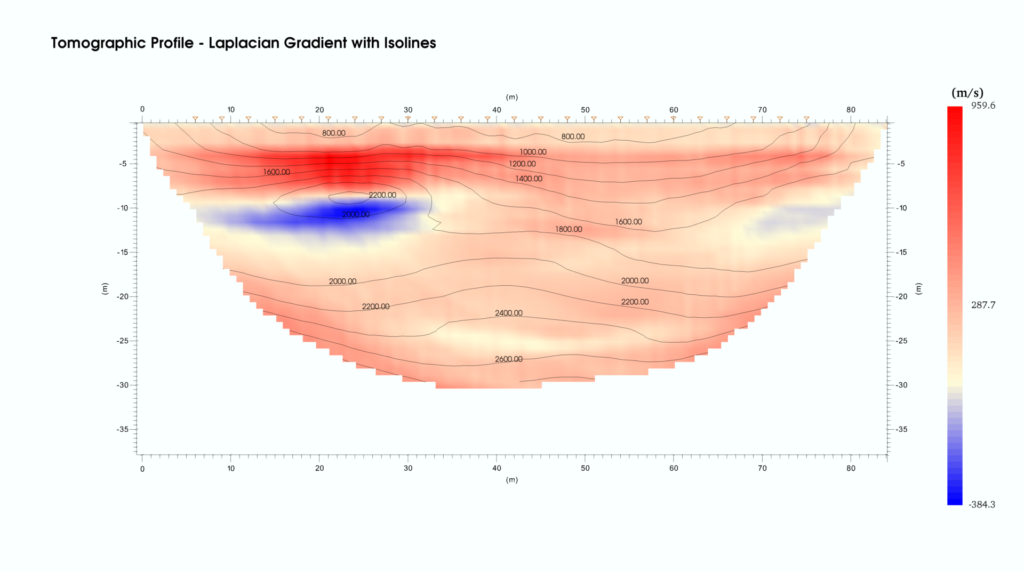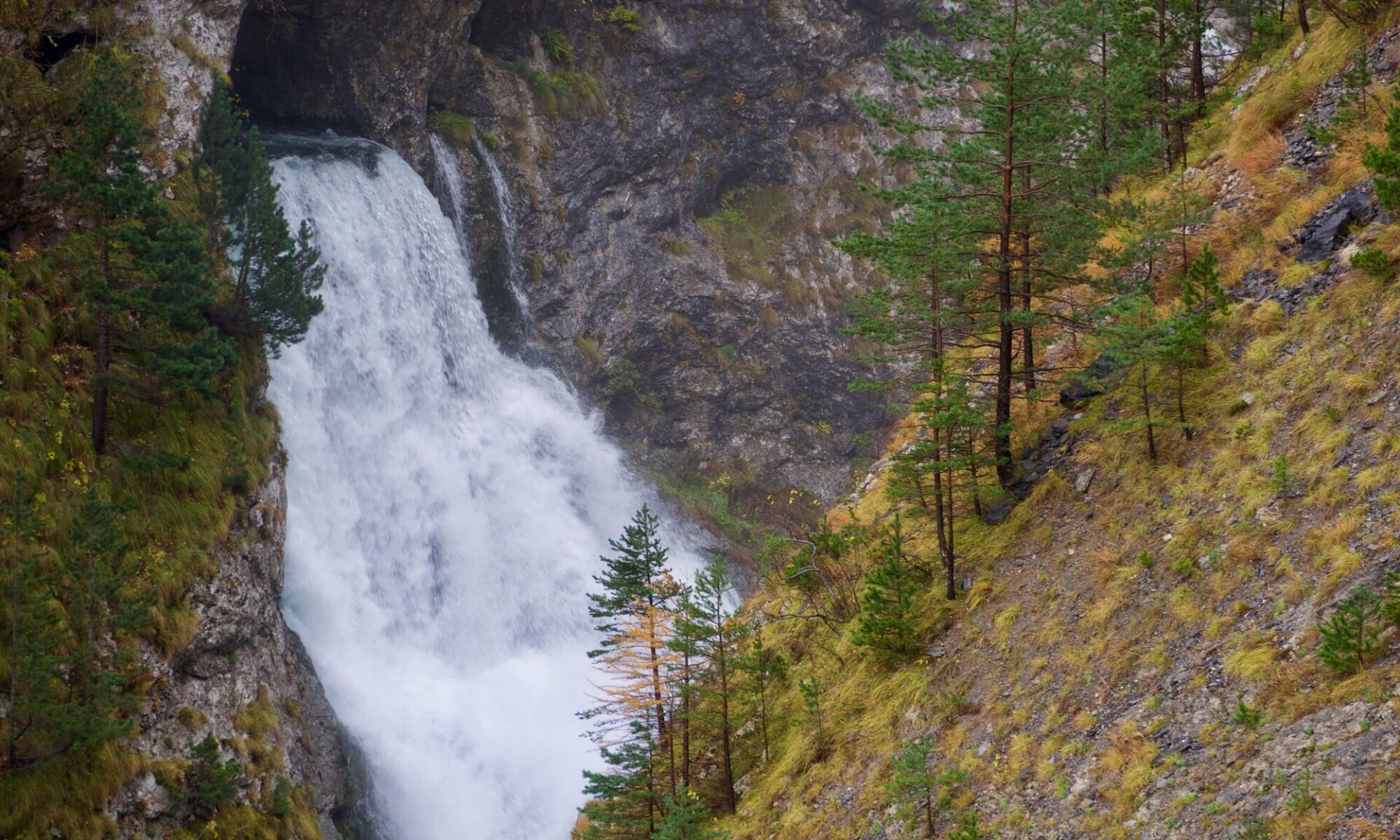In this work, seismic refraction tomography (SRT) was performed to investigate the characteristics of the subsoil and to investigate the evidence of the presence of a tunnel used for the carrying of water.

The survey was carried out using 24 vertical geophones and performing a high number of vertical energizations both inside and outside the line, in order to have a good coverage by seismic rays throughout the section.
A tunnel can be better detected if the seismic line is deployed perpendicular to that, as it will be represented by a localised speed anomaly. On the contrary, in case of parallelism between the structure and seismic line, the tunnel will be displayed as a horizontal layer easily confused with the rock layering.
SmartTomo implements a refracted data processing methodology based on the path of the fastest seismic rays, the tunnel can be identified in two ways:
- as a negative anomaly if the seismic rays traveling around the cavity take longer than normal;
- as a positive anomaly, if the tunnel lining is faster than the surrounding materials and the seismic rays take less time to reach the geophones.
However, there may also be a case in which the first arrivals are not disturbed by the presence of the tunnel and the object is not detectable. For these eventualities it is better to use different and more suitable methods of investigation such as GPR, electric tomography or gravimetry.
In the study analyzed here, the tomographic section in compression waves highlights a positive speed anomaly that may correspond to the tunnel we are looking for. The anomaly is very well highlighted by the profile of the Laplacian gradient.
We thank Dr. A.Saputo for the data and processing presented in this post.

External link
Sheehan, Jacob & Doll, William & Watson, David & Mandell, Wayne. (2005). Application of Seismic Refraction Tomography to Karst Cavities. (link)

